For this 2019 edition of Flashback, we wanted to conduct a small survey of what in our opinion are the two top stands of the fair: exhibitors who, that is, in our opinion stood out for the quality and novelty of the proposal. We decided to recognize this role to the stand of Galleria del Laocoonte and Apolloni, who exhibit together and bring to Turin the exhibition XX. The Feminine Gender in the Art of the Italian 20th Century, and to the stand of Galleria Russo in Rome, which stands out for the quality of the works proposed. Two Roman galleries, two stands where to find great protagonists of the twentieth century, two exhibitors who, this year, seem to us to have fully espoused the slogan “all art is contemporary” that characterizes the fair.
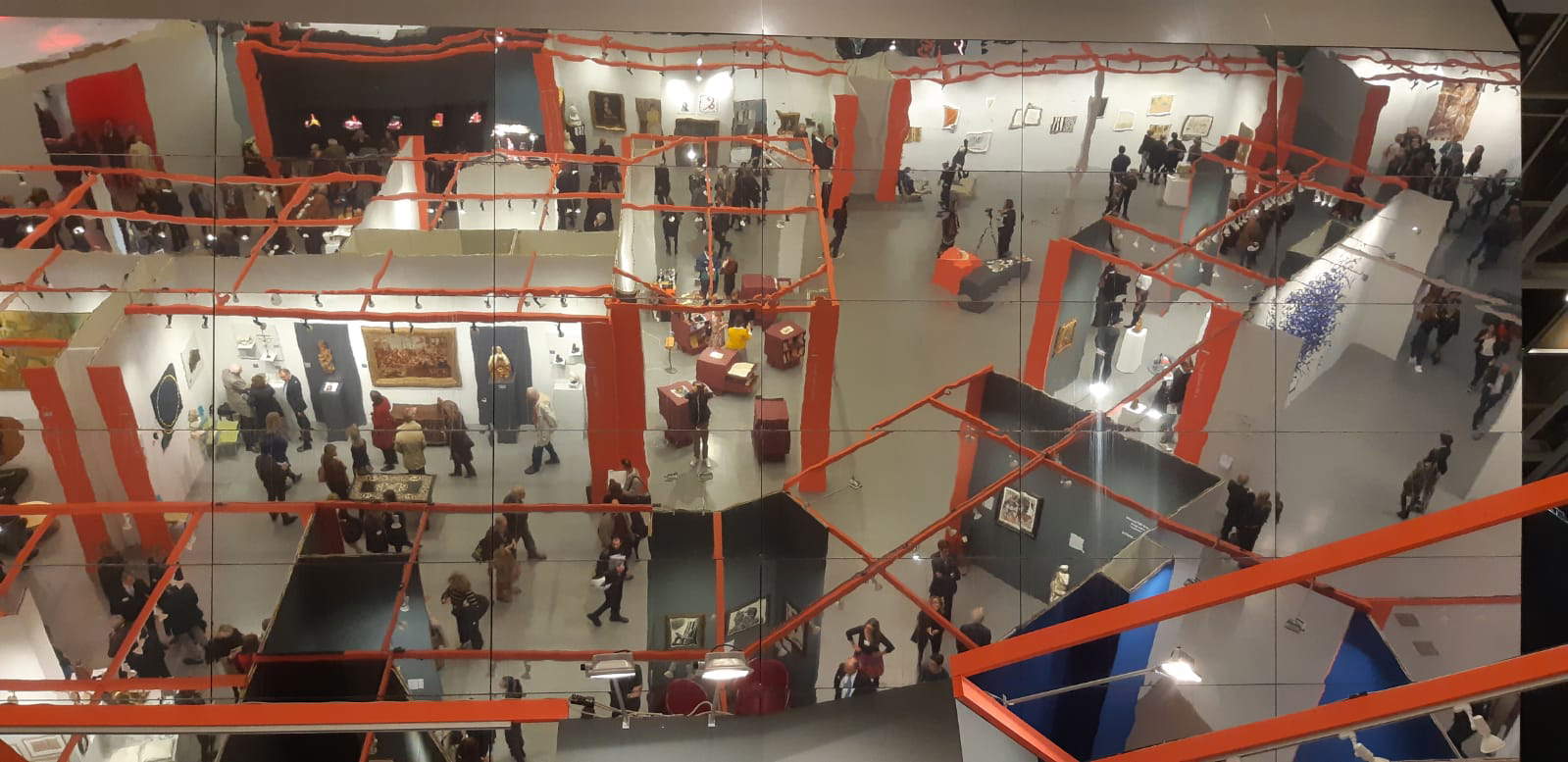 |
| Flashback 2019 |
At the Flashback preview, we spoke with Monica Cardarelli, director of Laocoon Gallery, and Fabrizio Russo, owner of Galleria Russo. With Cardarelli, we talked mainly about the exhibition, of which she herself is curator: the show, which has already been presented in the gallery’s Rome location, is therefore presented at Flashback with a selection of important works. The idea is to show the public how the twentieth century looked at the female gender, according to a dual perspective: on the one hand, women artists, and on the other, women (especially women artists) as seen by men. The twentieth century, Monica Cardarelli argues, more than any other saw rapid changes in the role, status, appearance and condition of women, which is why the reference to the twentieth century is well present in the title of the exhibition, which shows the public works by Giulio Aristide Sartorio (an angelic woman still affected by nineteenth-century conceptions), Libero Andreotti (an Artemisia in wax), Adriana Bisi Fabbri (present with a Self-portrait), Marisa Mori (also with a Self-portrait, plus a Woman Reading by the Sea), Edita Broglio(Terrace by the Sea), Elica and Luce Balla (Giacomo’s daughters, caught portraying each other: Also present is a portrait of Luce painting done by her father).
Why bring such an exhibition to Flashback? We asked Monica Cardarelli: “what better occasion?” argues the director of the Laocoon Gallery. “So many women come to see an exhibition, so many men can not only look at beautiful things, but also reflect: let’s just think about the fact that some of these women artists have managed to establish themselves by facing so many difficulties. For example, the reality of not being able to go to the academy, and also the impossibility of portraying the nude model from life, both female and male, even when, fortunate and wealthy, they were able to attend schools for the proper young ladies. Therefore, the female artists who became extraordinarily good are even more exceptionally so.”
If we were to point to three important works, Cardarelli plays it safe: "the portrait of Carolina Bonaparte, by Antonio Canova, the Portrait of Simona by an extraordinary artist who was a painter and sculptor, namely Antonietta Raphaël, and finally the guiding image of this exhibition, an important work by Achille Funi: Is a double portrait of two women artists, namely Felicita Frajova, aka Felicita Frai, and Leonor Fini, who plays the role of a man in the painting.“ We then ask Monica Cardarelli what are the expectations for this edition of Flashback: ”Actually,“ she confesses, ”I always let the. case to determine most things. I hope that the exceptional works we have brought to Turin can meet the taste of an intelligent collector. The collector who comes to us typically is a very educated collector who knows what he or she is buying."
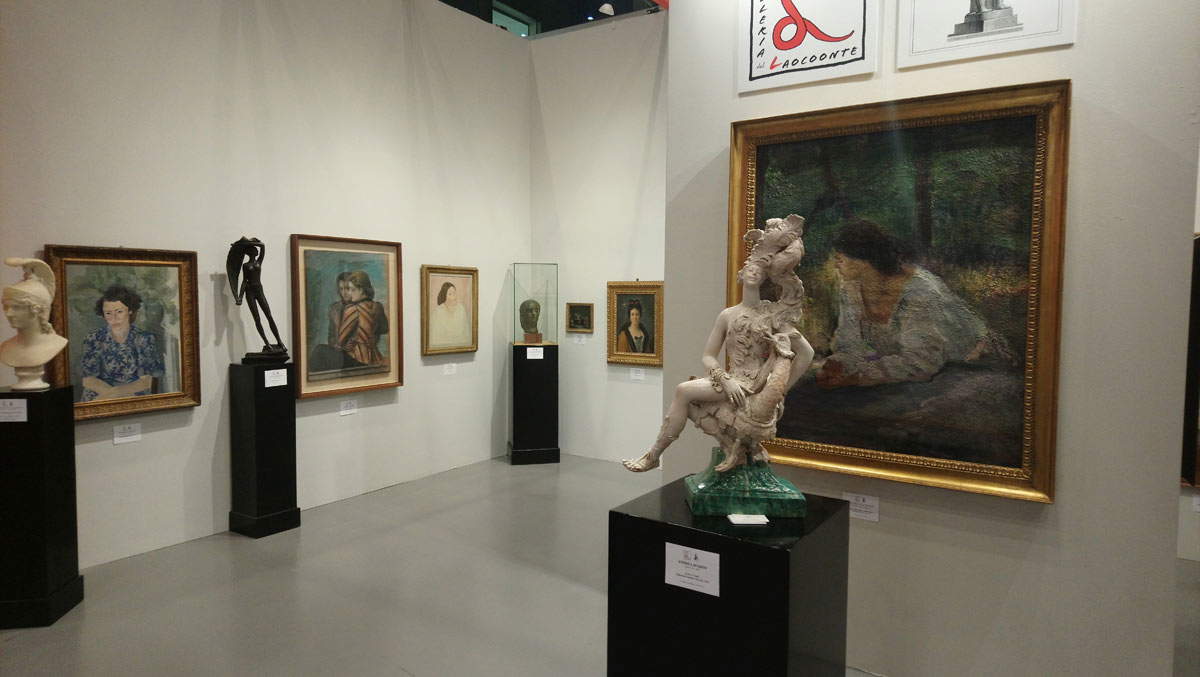 |
| Laocoon and Apolloni’s booth at Flashback 2019 |
 |
| Antoinette Raphaël, Portrait of Simona (ca. 1938; bronze, 70 x 12 x 23 cm) |
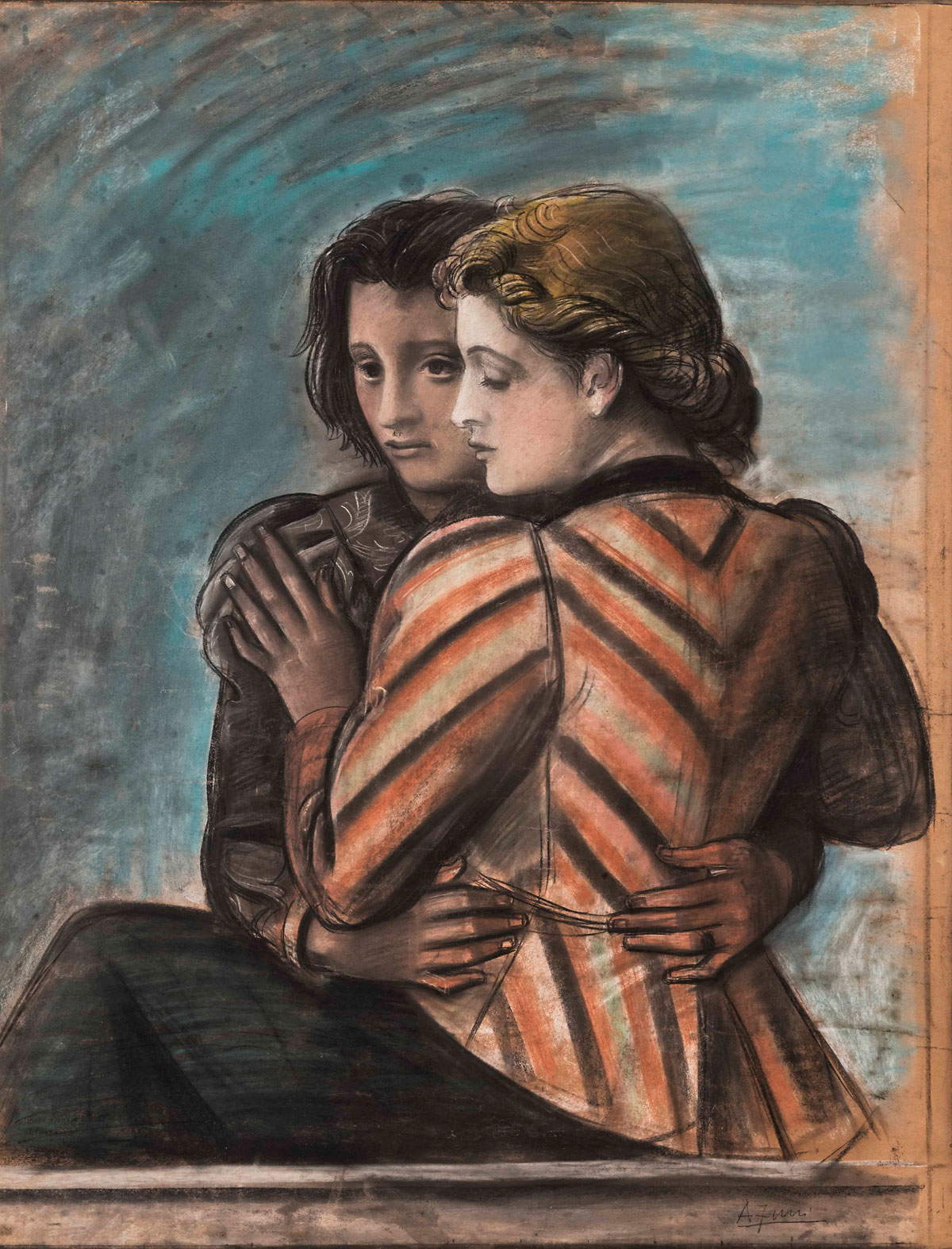 |
| Achille Funi, Ugo and Parisina (1934; pastel on paper) |
The Russo Gallery’s booth is located a short distance from that of Laocoon-Apolloni. And it is one of the busiest at the fair: it is impossible, after all, not to linger in front of Paul Gauguin’s superlative La sente des Gratte Coqs, John Singer Sargent’s Princess de Beaumont, Massimo Campigli’s double portrait, Mario Sironi’s tempera paintings, and Marino Marini’s Cavaliere. The quality is very high: Gauguin’s landscape and Sargent’s portrait are among the most valuable pieces in the entire fair. The Sente des Gratte Coqs, a work signed and dated 1982, depicts the path of Gratte Coqs, in Pontoise (in the Val-d’Oise, north of Paris): this is a painting executed during the French painter’s last stay in Pontoise, and it is also a work of considerable importance for its exhibition history. The portrait of the Princess of Beaumont, wife of Prince Ruffo of Calabria, first appeared on the market in the mid-twentieth century, and it is probably the first version of the work, executed by Sargent before he officially received the commission.
“In addition to these two important works,” says Fabrizio Russo, "Marino Marini’s Horse and Horseman is also worth mentioning: a plaster cast from 1947 that was also used to cast two bronze works that are in two European museum institutions of great importance. The Sargent and the Gauguin come from a very important collection and were until a few days ago in a vault in Geneva-they have a fantastic pedigree, because the Gauguin, for example, is listed in the Wildenstein catalog raisonné and has a wonderful history of museum exhibitions. The Sargent is also a work of great depth, striking in its painterly quality."
Quality, Russo explains, is precisely the main criterion that guides the Roman gallery’s choices. Which is also open to the contemporary: “basically our focus is on the Italian twentieth century,” Russo stresses, "but we also do contemporary. However, our contemporary, although avant-garde, is always very careful not to fall into trash, into provocation as an end in itself: one of the artists we propose, for example, is Manuel Felisi, who is being celebrated at Palazzo Barolo right now on the occasion of the exhibition that offers the public ten tapestries that are being presented right now."
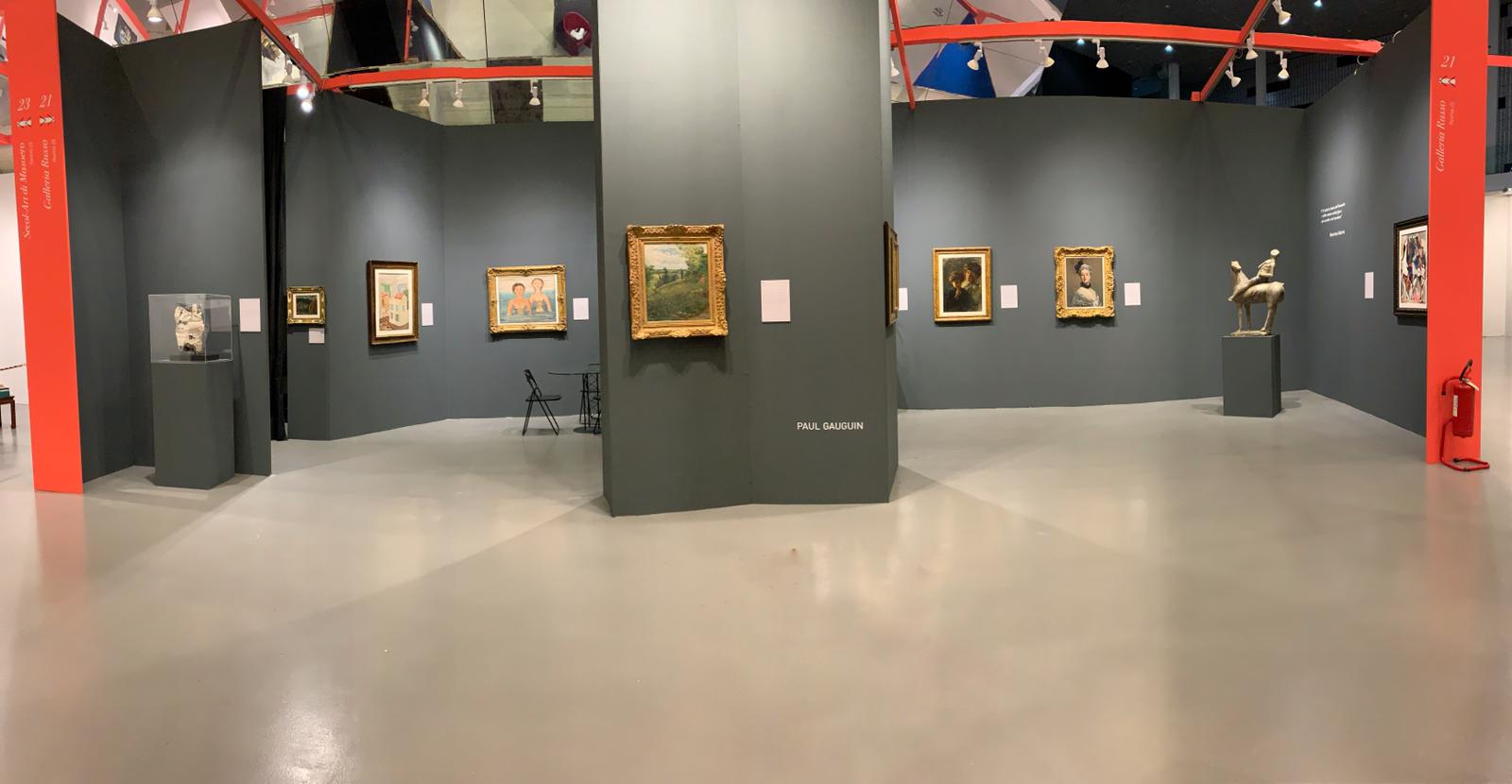 |
| Russo’s booth at Flashback 2019 |
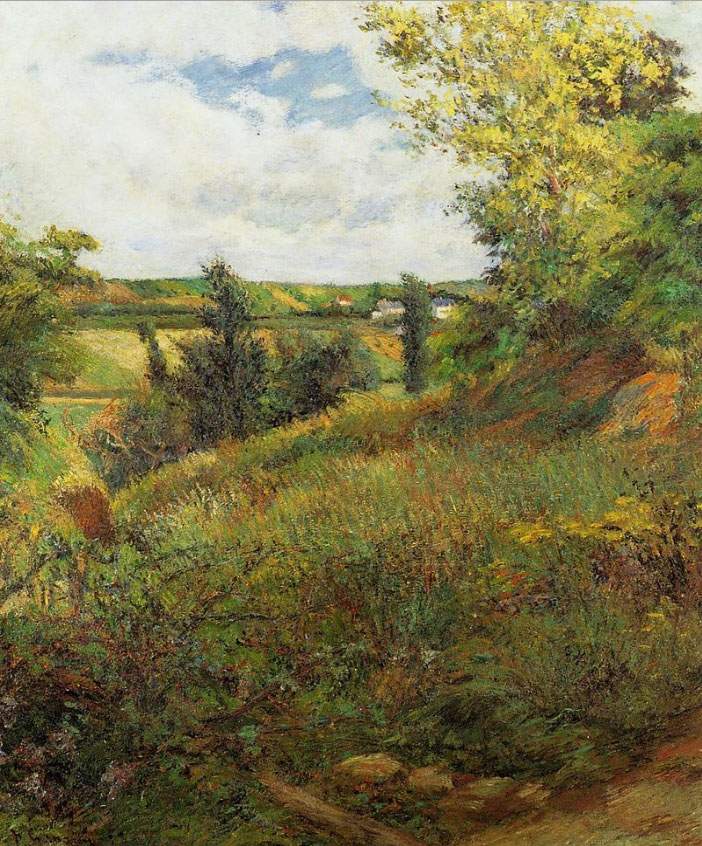 |
| Paul Gauguin, La Sente des Gratte Coqs (1882; oil on canvas, 56 x 46 cm) |
 |
| John Singer Sargent, Princess de Beaumont (1884; oil on canvas, 65.5 x 50.5 cm) |
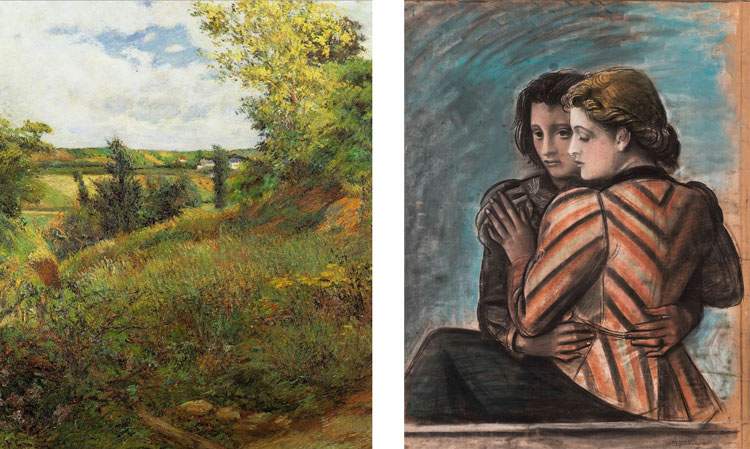 |
| From Gauguin to Women in the 20th Century: Laocoon/Apolloni and Russo are in our opinion the two top Flashback stands |
Warning: the translation into English of the original Italian article was created using automatic tools. We undertake to review all articles, but we do not guarantee the total absence of inaccuracies in the translation due to the program. You can find the original by clicking on the ITA button. If you find any mistake,please contact us.